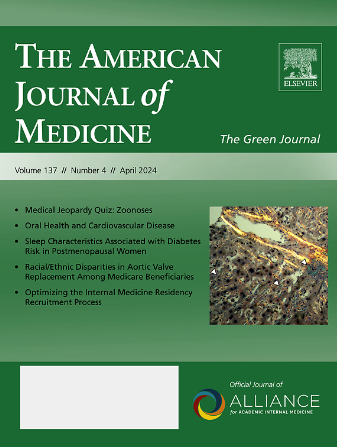Vitamin K Antagonist Anticoagulation in Antiphospholipid Syndrome: Time in Therapeutic Range and Clinical Outcomes
IF 2.5
3区 医学
Q1 MEDICINE, GENERAL & INTERNAL
引用次数: 0
Abstract
Background
Thrombosis in antiphospholipid syndrome is still frequently treated with vitamin K antagonists, with a target international normalized ratio of 2-3. Time in therapeutic range of international normalized ratio of ≥ 70% is considered optimal. Time in therapeutic range among antiphospholipid syndrome patients is not well documented and the clinical consequences of poor international normalized ratio control are uncertain. This study aimed to determine the proportion of vitamin K antagonist-treated antiphospholipid syndrome patients achieving time in therapeutic range ≥ 70%, to define the features associated with poor control and to determine its association with thrombotic and bleeding events.
Methods
This medical records review included antiphospholipid syndrome patients treated with vitamin K antagonists, between 2012-2023. The proportion of patients achieving a time in therapeutic range ≥ 70% was determined, and thrombotic and bleeding events were compared between patients with time in therapeutic range ≥ 70% vs < 70%.
Results
Sixty seven antiphospholipid syndrome patients were studied. It was observed that 29.9% achieved time in therapeutic range ≥ 70% and 9.1% of patients with 3 or more comorbidities achieved time in therapeutic range values ≥ 70% compared with 40% of patients with less than 3 comorbidities. Fewer recurrent arterial and overall thrombotic events occurred with time in therapeutic range ≥ 70%.
Conclusions
A minority of antiphospholipid syndrome patients treated with vitamin K antagonists achieve optimal anticoagulation and are at risk for recurrent thrombotic events, particularly arterial. Presence of multiple comorbidities is associated with poor international normalized ratio control. Careful monitoring of this patient population is warranted.
抗磷脂综合征中的维生素 K 拮抗剂抗凝:治疗范围内的时间和临床结果。
背景:抗磷脂综合征中的血栓形成仍经常使用维生素 K 拮抗剂治疗,目标国际正常化比率为 2-3。国际正常化比率在治疗范围内的时间≥ 70% 被认为是最佳的。目的:确定接受维生素K拮抗剂治疗的抗磷脂综合征患者中达到治疗范围内时间≥70%的比例,明确与控制不佳相关的特征,并确定其与血栓和出血事件的关系:病历回顾包括2012-2023年间接受维生素K拮抗剂治疗的抗磷脂综合征患者。结果:67 名抗磷脂综合征患者的血栓和出血事件发生率达到了 70%:研究了67名抗磷脂综合征患者。29.9%的患者治疗时间≥70%。9.1%患有3种或3种以上并发症的患者达到治疗范围时间值≥70%,而患有3种以下并发症的患者为40%。治疗范围内时间≥70%的患者发生复发性动脉和整体血栓事件的比例较低:少数接受维生素 K 拮抗剂治疗的抗磷脂综合征患者能达到最佳抗凝效果,但有复发血栓事件的风险,尤其是动脉血栓事件。存在多种并发症与国际标准化比率控制不佳有关。有必要对这类患者进行仔细监测。
本文章由计算机程序翻译,如有差异,请以英文原文为准。
求助全文
约1分钟内获得全文
求助全文
来源期刊

American Journal of Medicine
医学-医学:内科
CiteScore
6.30
自引率
3.40%
发文量
449
审稿时长
9 days
期刊介绍:
The American Journal of Medicine - "The Green Journal" - publishes original clinical research of interest to physicians in internal medicine, both in academia and community-based practice. AJM is the official journal of the Alliance for Academic Internal Medicine, a prestigious group comprising internal medicine department chairs at more than 125 medical schools across the U.S. Each issue carries useful reviews as well as seminal articles of immediate interest to the practicing physician, including peer-reviewed, original scientific studies that have direct clinical significance and position papers on health care issues, medical education, and public policy.
 求助内容:
求助内容: 应助结果提醒方式:
应助结果提醒方式:


